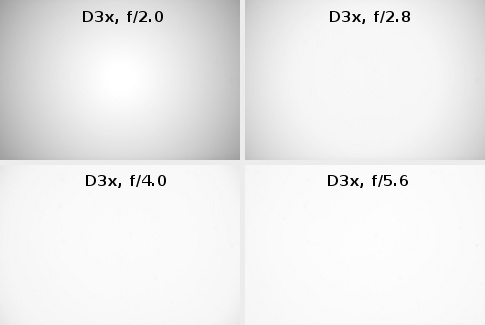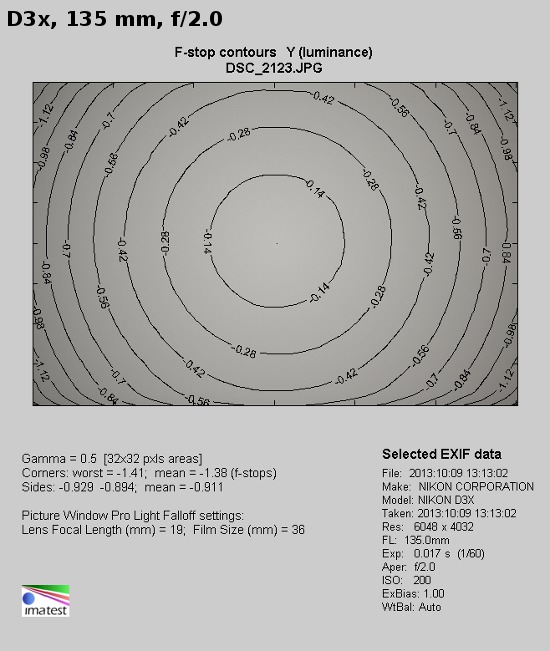Carl Zeiss Apo Sonnar T* 135 mm f/2.0 ZE/ZF.2
8. Vignetting

You can notice that the vignetting is not a big problem. Only at the maximum relative aperture its level can be called moderate as its value we assessed as 20% (-0.66 EV). On stopping down to f/2.8 it decreases to an imperceptible level of 5% (-0.14 EV) so the problem practically disappears.
Please Support UsIf you enjoy our reviews and articles, and you want us to continue our work please, support our website by donating through PayPal. The funds are going to be used for paying our editorial team, renting servers, and equipping our testing studio; only that way we will be able to continue providing you interesting content for free. |
- - - - - - - - - - - - - - - - - - - - - - - - - - - - - - - - - - - - - - - - - - - - - - - -
Let’s check how the tested lens fares on the full frame sensor of the Nikon D3x.

There are a bit more problems here; still they cannot be called serious. At the maximum relative aperture the brightness loss in the frame corners amounts to 38% (-1.38 EV). That aberration becomes moderate already by f/2.8, where it reaches 22% (-0.70 EV) and imperceptible by f/4.0, where it amounts to just 8% (-0.23 EV).
 |






